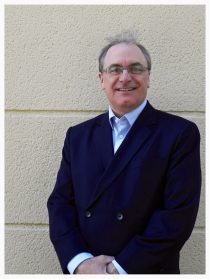
ARTICLE
Dr "unlikely to be fatal" Keen
R (KS and AM) v LB Haringey [2018] EWHC 587 (Admin)
As far as this case goes, it does not appear unique. Just another where a hard-pressed authority allows its lack of resources to overlook its legal duties. However, I would like to highlight Dr Keen’s role which appears to have been given no publicity in its own right but should have been.
KS is AM’s mother. KS suffers from considerable mental and physical health difficulties but is the sole carer for AM and her older sibling, JM (their father lives with his parents in order to care for them). They live in a two-bedroom, first-floor council flat.
AM suffers from autism. She has sleeping difficulties so she awakens up to 4 times a night. She has social communication and interaction difficulties, coupled with behavioural difficulties and sensory issues. The principal problem is the fear that AM could get out onto the balcony at night and fall from there. The family’s social worker had no safeguarding concerns other than that the property was unsuitable because of this issue. Given AM’s presentation and KS’s own difficulties, it was unrealistic to expect KS to exercise the constant vigilance required, particularly at night, to keep AM safe.
HHJ Walden-Smith held that KS and AM had fallen between the housing and children’s services departments of Haringey. The social worker had referred them to the housing department and then closed the file while the housing department limited themselves to a strict application of their allocations policy and placed them in Band C, from which there was no realistic prospect of their being rehoused. HHJ Walden-Smith held that it was irrational for Haringey to rely on KS’s vigilance to keep AM safe. She granted declaratory relief and mandatory orders for a plan to be put in place to address AM’s unmet needs.
Dr Keen’s involvement was considered in the judgment:
26. A report was obtained from “NowMedical” dated 24 November 2017. Dr Keen, who provides the report, did not either examine AM or visit the property. He concludes that the property is “less than ideal” but that as AM is five (she is now six) the need for an exclusive bedroom is not yet urgent and that there is not a serious medical need to relocate. He agrees that a ground floor property would be optimum but that “given a fall from a first floor is unlikely to be fatal, and that availability of ground floor properties may be so scarce as to potentially delay a relocation, then I think that a first floor property is an acceptable alternative.”
Pausing there for a moment – “a fall from a first floor is unlikely to be fatal”. That is the basis of Dr Keen’s opinion.
HHJ Walden-Smith noted that Dr Keen had not taken into account the fact that AM’s sleeping behaviour meant that she could not share and JM, aged 11, had to sleep with his mother, but then went on (in bone-dry terms),
He also does not appear to take into account the real risk to AM of her being able to access the outside balconies, climb up and fall save to dismiss any fall from a first floor balcony as being “unlikely to be fatal”. It is not clear on which medical basis he comes to that conclusion, or indeed what injuries he considers it likely that a 6 year old child might sustain falling from a first floor flat four to five metres above ground level and what level of injuries he considers to be an acceptable risk.
At paragraph 39, HHJ Walden-Smith noted that, as well as KS’s evidence, she had evidence from social workers who had seen AM at home and the support worker who spent around 25 hours a week there, whereas Dr Keen had neither seen AM or KS nor visited the property. At paragraph 41, she said further,
I do not consider that it can be realistically suggested that a young child falling from a first floor balcony is not going to cause, at the very least serious injury, and possibly death (despite what is said in Dr Keen’s report) and that the first floor balconies do therefore pose a very real risk to AM’s well-being. The photograph of the view from the first floor balcony entirely undermines Dr Keen’s view of the limited damage that could be caused.
There we have it. Dr Keen believes that it may be acceptable for a 5-year-old to live with an unspecified risk of death and that it is not worth considering what injuries short of death might occur or their likelihood. He might argue that he did not have full information (for example, it is unlikely he knew that the first floor was as high as 4-5 metres above ground level or that he had the benefit of the photos shown to the court). However, that is rather the objection to the whole NowMedical process – as noted by the judge, and as considered in Shala v Birmingham CC [2007] EWCA Civ 624; [2008] HLR 8, Dr Keen carries out desktop assessments which do not involve examining the patient and which certainly would not involve going to look at the property. The correct response in such circumstances would be to say that he does not know the level of risk in the absence of full information but that would render his opinion of little assistance to the authority and so he ignores the gaps in his knowledge.
In my experience, Dr Keen and his colleagues often come up with opinions which are arguably objectionable, particularly in the light of the fact that they do not examine the patient, consider their full medical records or even talk to their medical advisers. However, in this case, Dr Keen took it to a new level.
NowMedical objected to the above and their solicitors asked me to put a statement on my website. I am happy to do so and here it is. If you have any comments to make on what they have said, please email me.


